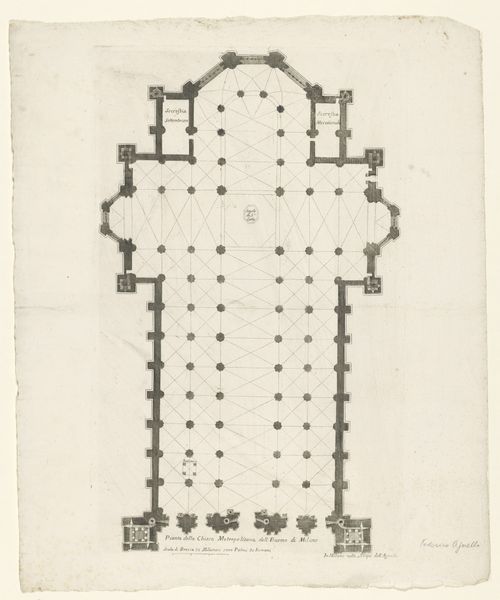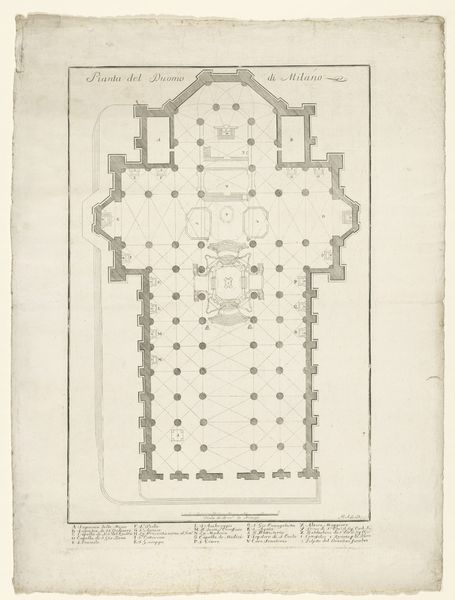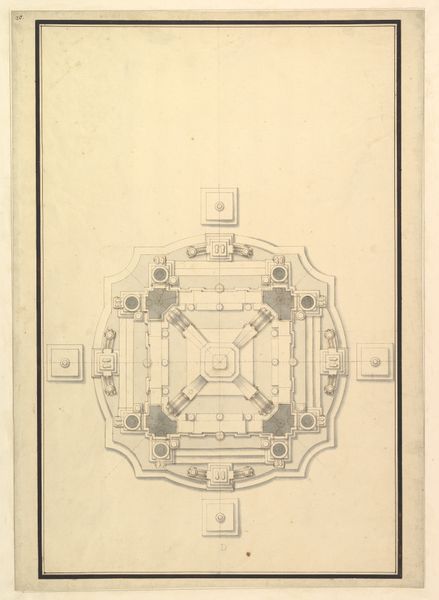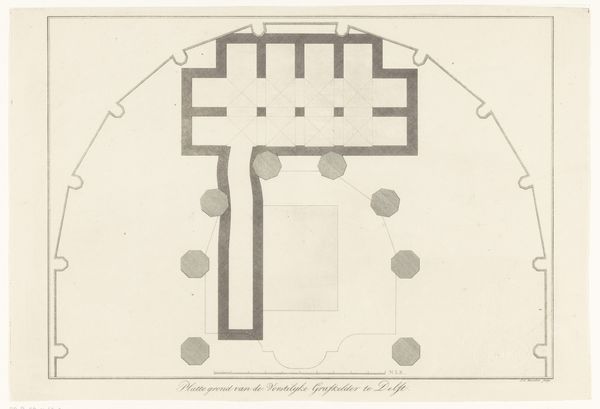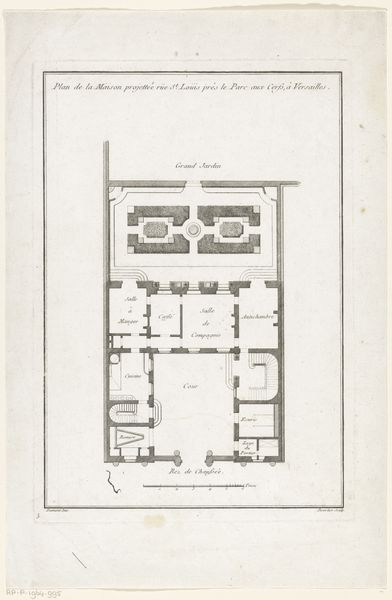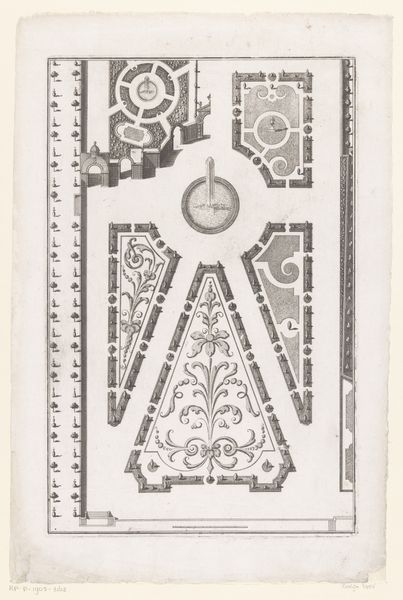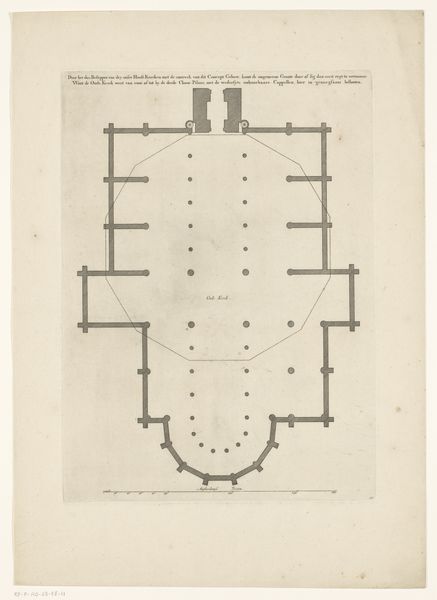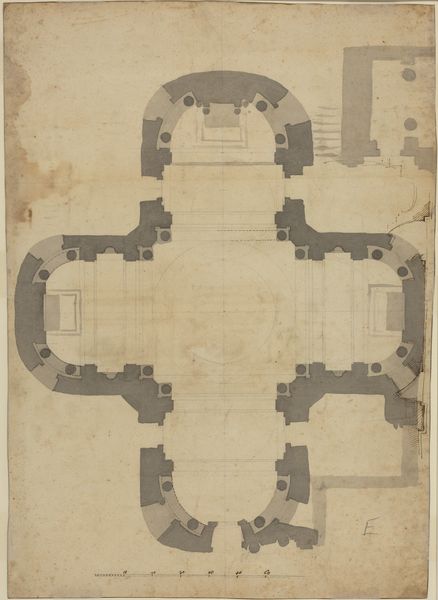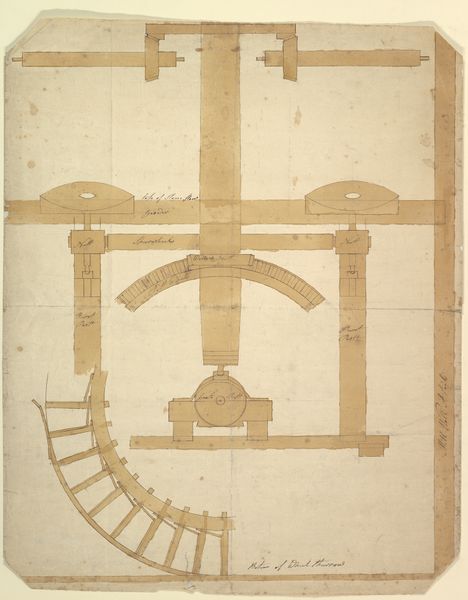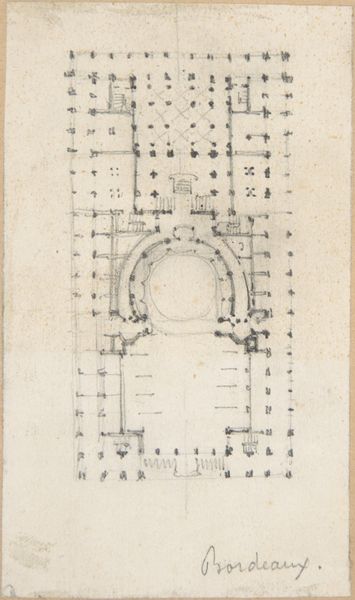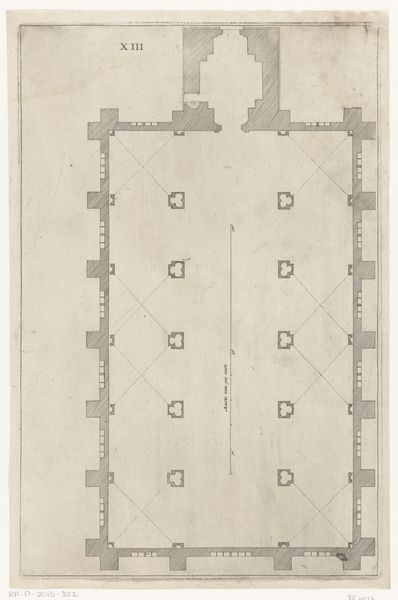
Speculum Romanae Magnificentiae: Ground plan of a building with the arms of Pope Julius III engraved at the center 1530 - 1580
0:00
0:00
drawing, print, engraving, architecture
#
drawing
# print
#
11_renaissance
#
geometric
#
line
#
cityscape
#
italian-renaissance
#
engraving
#
architecture
Dimensions: sheet: 18 7/8 x 13 3/8 in. (48 x 33.9 cm) plate: 16 1/4 x 11 13/16 in. (41.2 x 30 cm)
Copyright: Public Domain
Editor: This is "Speculum Romanae Magnificentiae: Ground plan of a building with the arms of Pope Julius III engraved at the center," an engraving created anonymously between 1530 and 1580. I'm immediately struck by the precise linework and geometric quality of the composition, the symmetry almost gives it a sense of perfect balance. What catches your eye? Curator: Primarily, I observe the intricate interplay of positive and negative space. The linear elements delineate the architectural plan, creating a network of forms that emphasize structure. Consider the strategic placement of the Papal arms – a focal point grounding the entire composition. Editor: It’s interesting you point that out, the Papal arms really do anchor the entire thing! So, what would you say is most critical in decoding a print like this, formalistically speaking? Curator: The internal relationships are critical. How the curved apse interacts with the rectilinear forms, the progression of line weights that suggest depth. We might also consider the symbolic function of the geometric forms themselves – circles suggesting divinity, squares representing earthly order, creating a cohesive structure of meaning through form. Editor: Are you suggesting the artist consciously used these shapes with symbolic meaning, or that it's simply inherent? Curator: I propose both are concurrently present, the artist strategically uses these archetypal shapes which therefore instills intrinsic meaning on the viewer. In viewing how the forms complement each other, we come to grasp the harmony that defines this specific aesthetic. Editor: It's amazing how much can be understood simply by dissecting the composition itself. Curator: Indeed, the artwork's intrinsic elements often communicate volumes independently of their representational function. Editor: I’ll definitely be looking at the shape and lines first from now on.
Comments
No comments
Be the first to comment and join the conversation on the ultimate creative platform.
